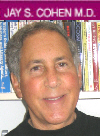Prescription Drug Use in America: The Startling Numbers And Their Implications
In 2002, Americans filled 3,340,000,000 outpatient prescriptions.1 That’s 12 prescriptions for every man, women, and child in America. Has the American dream become 2 kids, 2 cars, and a dozen drugs in each person’s medicine chest?
Despite a cold economy in which most industries have seen sales drop, U.S. drug sales increased substantially in 2002, reaching $219 billion. According to NDCHealth, overall drug sales (all sources) grew 12% 2002, 18% in 2001, and 15% in 2000 (based on wholesale acquisition costs). 1
The trend of doctors writing more and more outpatient prescriptions each year continues without pause: 1,2
2002: 3,340,000,000 Rx
2001: 3,200,000,000 Rx
2000: 2,979,000,000 Rx
1999: 2,821,000,000 Rx
1998: 2,523,000,000 Rx
The cost of these drugs has more than doubled in five years.
The outlook for the future? According to Pharmacy Times last year: “For the past 3 years, prescription volume has grown by 25% in the United States, and there doesn’t appear to be a slowdown in sight.”2
I’m not anti-medication. Medications do a great deal of good, but we must ask, what is the goal of the drug industry? To simply sell as many drugs as possible? Yet, medications aren’t like other commodities. Prescription drugs aren’t the same as cars, cosmetics, or CD players. Drugs have direct, powerful effects on human systems. Some of these effects are negative, and taking multiple drugs — as 25% of Americans do — increases the risks exponentially. Psychologically, the growing attitude that drugs are the answer for every ache and angst is destructive for individuals and societies.
Prescription medications are vitally important for treating medical conditions, but they are also the #4 leading cause of death, cause more than 1 million hospitalizations annually, and are a major cause of disability and drug dependency.3 Over-use of medications is rampant.
Many doctors treating high cholesterol and high blood pressure turn to drugs without ever discussing diet and exercise, although many of these disorders are nutritional, not medical. Many patients prefer a pill to changing harmful habits. With drug advertising everywhere, what is the message being drummed into us and our children: that for every symptom and sensation the solution is a pill?
“The drug industry has been the most profitable industry by far year after year. Drug companies need profits to conduct research, but how much is enough, when most profits go to marketing, promotions, and the development of unneeded me-too drugs?”
The drug industry has been the most profitable industry by far year after year. Last year, Public Citizen stated: “While the overall profits of Fortune 500 companies declined by 53% [in 2001], the top 10 U.S. drug makers increased profits by 33%. These companies had the greatest return on receipts, reporting a profit of 18.5 cents for every $1 of sales, which was eight times higher than the median for all Fortune 500 industries.”4
Meanwhile, drug costs are driving health insurance expenditures and your premiums through the roof. They are driving thousands of people to Canada and Mexico for drug prices they can afford. For many people, it comes down to medications or food. For many healthcare systems, Rx drugs cost more than all of their doctor visits or hospitalizations combined. Drug companies need profits to conduct research, but how much is reasonable, especially when the greatest proportion of these profits go to marketing, promotions, and the development of unneeded me-too drugs?
Here are the big $ales winners in 2002:
1. Lipitor (cholesterol-lowering): $5.58 billion (up 18%)
2. Zocor (cholesterol-lowering): $4.069 billion (up 18%)
3. Prevacid (ulcers, reflux): $3.894 billion (up 4%)
4. Prilosec (ulcers, reflux): $3.341 billion (down 22% after going generic in 2002)
5. Procrit: >$2 billion, exact numbers N/A
6. Zyprexa (neuroleptic): $2.716 billion (up 15%)
7. Paxil (SSRI antidepressant): $2.509 billion (up 13%)
8. Zoloft (SSRI antidepressant): $2.445 billion (up 13%)
9. Epogen: >$2 billion, exact numbers N/A
10. Celebrex (anti-inflammatory): $2.380 billion (up 5.3%)
11. Nexium (ulcers, reflux): $2.000 billion (new drug)
12. Neurontin (seizures, pain): $2.000 billion
13. Norvasc (antihypertensive): $1.814 billion (up 5%)
Prescription drug use and costs are like a runaway train. Where is it heading? Can we, should we, try to slow it? Is there an optimal balance between effective medication use and overmedication? Can we find it?
The mission of this newsletter and website is to discuss issues about drug use, drug safety, and proven-effective alternative methods that mainstream medicine and the media ignore. These issues affect every family in America and the developed world. I’ll have a lot more to say on these issues in subsequent newsletters.
References:
1. NDCHealth, a healthcare information services company. Atlanta, GA, Apr. 1, 2003:www.ndchealth.com.
2. Top 10 Drugs of 1997-2001. Pharmacy Times, April editions in respective years.
3. Lazarou, J, Pomeranz, BH, Corey, PN. Incidence of adverse drug reactions in hospitalized patients: a meta-analysis of prospective studies. JAMA, 1998 Apr 15, 279(15):1200-5.
4. Public Citizen. Pharmaceuticals Rank As Most Profitable Industry, Again. Public Citizen, 4/18/02:citizen.org.
NOTE TO READERS: The purpose of this E-Letter is solely informational and educational. Theinformation herein should not be considered to be a substitute forthe direct medical advice of your doctor, nor is it meant to encourage the diagnosis or treatment of any illness, disease, or other medical problem by laypersons. If you are under a physician’s care for any condition, he or she can advise you whether the information in this E-Letter is suitable for you. Readers should not make any changes in drugs, doses, or any other aspects of their medical treatment unless specifically directed to do so by their own doctors.
Category: Articles and Reports
